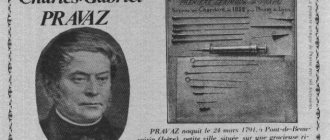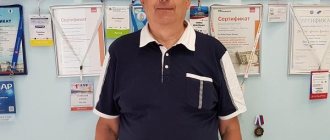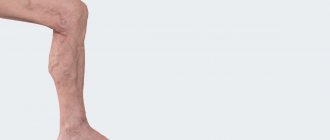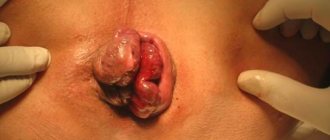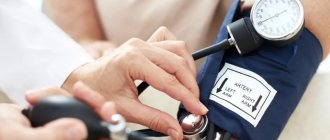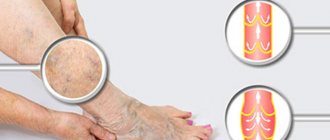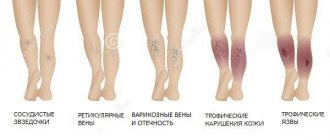Hands are the second most important part of the body (after the face), which is paid attention to during visual contact. At the same time, after performing a rejuvenating procedure on the face, the hands can show the real age of a person.
Dilated veins on the arms of famous artists
The most common reasons for the appearance of dilated veins in the arms are: increased stress on the arms due to the characteristics of professional work or sports and age-related changes associated with hypotrophy of the skin, subcutaneous tissue, as well as a decrease in the number of elastic fibers in the vein wall.
Age-related changes on the hands
Is there a way to improve the appearance of your hands and remove unsightly, crooked, bulging veins on your hands? Yes, there is a way! The technique of sclerotherapy of veins in the arms in Moscow has been successfully used for a long time in our phlebology center. It is also suitable for eliminating enlarged veins and spider veins on the legs, face and other parts of the body. Hands are no exception to this technique, but its implementation has a number of subtleties, and therefore, it is performed only by highly professional phlebologists who have extensive experience working with sclerotherapy drugs.
Why is sclerotherapy for unsightly arm veins better than other treatments?
To remove veins in the arms, classical techniques can be used - miniphlebectomy in its cosmetic version (removal of veins through micropunctures) or endovenous laser obliteration (suitable only for straight venous areas of large diameter). However, these techniques are quite traumatic, expensive and in some cases not very cosmetic - after the operation, bruises persist for several weeks, and scars from punctures may remain.
In contrast to these procedures, sclerotherapy on the hands is effective, safe, its implementation does not require serious financial costs, and the ability to work is not impaired during this manipulation.
Important to remember!
Problems with arm veins are not a minor pathology. It can lead to a number of complications and the appearance of additional negative manifestations. Thus, in a number of situations when vein pathology is caused by problems with blood circulation, symptoms such as increased body temperature (there may be minor indicators), hyperemia of the skin, the presence of a lump or compaction at the site of the lesion, the development of edema, change in skin color, weakness muscles and the appearance of ulcers on the skin. This process can lead to the formation of blood clots, more commonly known as thrombi. And this is a condition that threatens human life, since blood clots can break off.
Don't forget about preventing the problem. After all, prevention is easier than cure. All preventive measures are aimed at preventing veins from bloating. They are aimed at reducing stress and maintaining a healthy lifestyle. So, for prevention, they recommend exercise, giving up bad habits and coffee, proper nutrition and other simple measures. If there are any disturbing signals and symptoms, you should contact a specialist as quickly as possible - this will allow you to start treatment at earlier stages and stages, when you can help the person faster and more effectively.
There are contraindications. You should consult your doctor
How is sclerotherapy performed on the hands?
No special preparation is required for this procedure. The procedure itself can be performed in a treatment room (manipulation room). After treating the patient’s hands with an antiseptic solution, the phlebologist performs a puncture of the dilated vein on the arm with a needle and injects into it with a syringe a solution or foam form of a pre-prepared sclerosant (a substance that causes “sticking” and subsequent “resorption” of the target vein). The vein is punctured to administer the sclerosant using a thin needle of very small caliber, which ensures virtually no pain during the injection. After administering the drug, the hand is bandaged with an elastic bandage or a special compression glove is put on and the patient is sent home. Occlusion (“gluing”) of the vein occurs within a few days; resorption of the dilated vein usually takes several weeks.
Injection of sclerosant into a dilated vein on the hand
Filler Teosyal Redensity
Another great filler for replenishing volume is the Swiss Teosyal Redensity. It appeared on the market relatively recently and managed to win the most positive reviews from both cosmetologists and patients.
The main active component of Teosyal is also hyaluronic acid of non-animal origin. This preparation contains quite a lot of acid: 25 mg/g. And the acid molecules are bound together so tightly that the disintegration of their compounds occurs slowly. This explains the long-lasting effect after contouring with Teosyal. Manufacturers consider the purest hyaluronic acid to be the main advantage of the filler. The properties of the acid contained in this drug not only meet European pharmacological standards.
They exceed the required standards by several points, i.e. the acid is even purer than required by law.
Teosyal, in addition to hyaluronic acid, contains amino acids, antioxidants, vitamin B6, minerals, and lidocaine. Thanks to this cocktail, the skin regains its former radiance, elasticity, volume and wrinkles are smoothed out.
Results of arm vein removal 1 month after the procedure
Veins of the forearm before (left) and after (right) sclerotherapy
Veins of the dorsal surface of the hand before (left) and after (right) sclerotherapy
How to determine
It is possible to diagnose the disease using studies: Doppler sonography, MRI of the veins, ultrasound of the vessels of the upper extremities. The most modern diagnostic method for the occurrence of symptoms of varicose veins and phlebitis (inflammation of the walls of the veins) is considered to be duplex sonography (ultrasound examination of blood vessels).
Is it possible to clean the vessels? More details
Causes of varicose veins
Varicose veins of the upper extremities are an acquired disease. More often it manifests itself in middle-aged or elderly patients and is associated with a decrease in the tone of the vascular walls, poor lifestyle and nutrition. However, a hereditary predisposition has also been identified, and in some cases it is caused by congenital pathologies of the vascular system. Among the factors that can trigger the process and provoke the development of varicose veins are the following:
- venous valve insufficiency is a congenital disorder that leads to congestion;
- intense physical activity with a lack of rest - with this regimen, there is an intense flow of blood to the distal parts of the limbs, and then it remains in the vessels, expanding them;
- unhealthy diet with a predominance of fatty and meat dishes - cholesterol is deposited on the inner lining of blood vessels, which reduces their diameter, reduces strength and elasticity;
- deficiency of vitamins and mineral compounds in the diet, especially vitamins A, C and E;
- in women, varicose veins are often caused by hormonal disorders - it has been proven that a lack of estrogen causes a decrease in venous tone;
- long-term use of contraceptives in tablets - they are also able to correct hormonal levels, resulting in problems with blood vessels;
- Frequent consumption of alcohol is one of the causes of swelling;
- smoking - nicotine has a detrimental effect on the condition of the vascular walls.
REFERENCE! On the upper extremities, varicose veins are more common in women. This is due, among other things, to the structural features of the shoulder girdle: in men it is better developed, so the blood supply to the distal sections is more intense.
Diagnostic and treatment methods
Diagnosis of varicose veins is not difficult, especially in the later stages. It is important to collect medical history data to determine the cause of the pathological process. If you treat only the symptoms of varicose veins, the disease will reappear even after surgery. Many medical institutions offer a comprehensive diagnostic scheme for varicose veins, which may include the following studies:
- examination and medical history, identification of similar disorders in the patient’s relatives, analysis of diet and lifestyle;
- functional tests - a method for diagnosing blood flow, identifying problem areas;
- Dopplerography is a specific technique for examining blood vessels using ultrasound with the addition of a contrast agent;
- duplex ultrasound scanning is an even more accurate method;
- MRI with contrast is the most informative examination method.
The purpose of diagnosis is to determine the speed of blood flow, the presence and location of problem areas. Next, an individual treatment regimen is selected, which will include eliminating the cause and symptoms of the disease.
Conservative techniques
Any treatment regimen necessarily includes general recommendations that should be followed throughout life. First of all, it is necessary to adjust your diet by eliminating fatty and fried foods, smoked foods and canned food. The diet should be based on light but vitamin-rich foods, including cereals, vegetables and fruits, lean meats and fish. And it is also important to pay attention to proper rest, which should be alternated with light physical activity. It is useful to do simple exercises throughout the day: wrist twists, arm raises and joint rotations. These measures will strengthen blood vessels and avoid congestion. You definitely need to give up bad habits.
Treatment of varicose veins at home is ineffective, as is the uncontrolled use of pharmaceutical ointments and patches
The next stage of treatment for varicose veins is compression therapy. When the veins of the upper extremities are affected, special cuffs are used, and elastic bandages can also be used. It is important to put them on correctly, and also to choose products of a certain rigidity. In total, there are 4 classes of knitwear, which is used in the manufacture of compression cuffs: the first is the most elastic and is suitable for the first stages of the disease, and the fourth is the densest and can be used in the later stages.
Drug treatment includes the use of several groups of drugs:
- venotonics – means for strengthening vascular walls, most popular in the form of ointments;
- painkillers, including those that can be used in tablet form;
- non-steroidal anti-inflammatory drugs;
- antiplatelet drugs - thin the blood, thereby preventing the formation of blood clots.
Drug therapy rarely brings the desired result, even in the early stages. Taking medications should be combined with other methods, including wearing compression devices (bandage or cuff). Recommended methods of treating varicose veins include hirudotherapy - the use of leeches. They have a positive effect on the composition of the blood and thin it, which helps relieve swelling and prevents the formation of blood clots.
Treatment of advanced varicose veins
In advanced stages, varicose veins can only be cured by surgical methods. The decision on the method of performing the operation is made by the attending physician. One of the most radical methods is the complete removal of a section of the vessel. At the same time, the intensity of blood flow remains unchanged, since the blood supply is carried out through highways. However, recently, minimally invasive methods are increasingly used:
- laser treatment - coagulation (soldering) of affected vessels with a laser to stop blood flow in them, the procedure is characterized by the absence of scars and a short rehabilitation period;
- sclerotherapy is the introduction of drugs into the lumen of a vessel that clog it and stop blood circulation.
Varicose veins on the hands are a chronic disease in which there is poor circulation and the development of dangerous complications is possible. When the first symptoms appear (pain, heaviness in the limbs), you should seek medical help. If you start treatment in the first stages, you can get by with conservative methods, but modern minimally invasive methods remain the most effective. They allow you to immediately restore normal blood supply to the extremities, but to prevent the disease, it is important to reconsider your lifestyle and diet even after surgery.
Definition and mechanism of development
Varicose veins are a vascular disease that occurs due to blood stagnation and stretching of the venous walls. They take on the appearance of expanded cords and become noticeable under the skin. The process progresses as blood stagnation provokes a further decrease in the tone of the venous walls. The disease is accompanied by inflammation of the blood vessels and soft tissues surrounding the veins. Varicose veins on the hands can be a consequence of both external factors and internal disorders in the body, and also occur as part of a complex of age-related changes.
Features of the Lakhta Milon laser
Modern science has long appreciated all the advantages of using lasers in medicine. Therefore, today new, more advanced devices are constantly appearing, one of which is the domestically produced Lakhta Milon device.
With its help, you can perform minimally invasive operations in the shortest possible time, differing in:
- high degree of security,
- efficiency,
- speed,
- short recovery period,
- no need for general anesthesia.
How to independently diagnose whether there are varicose veins or not? If a vein is visible, is it varicose veins?
Varicose veins are diagnosed either by symptoms, i.e. according to subjective sensations: nagging, severe pain, heaviness in the legs, swelling, discomfort; or by objective: dilated veins, the presence of one or more nodes. In any case, such symptoms should not be ignored, but it is better to get advice and then monitor the development of the pathology. If the veins are clearly visible on the body, this does not indicate varicose veins. There are such people, they are also called “geographical map”, in whom the vessels are very close to the surface, and the skin is very thin. Varicose veins can only be differentiated using ultrasound, or rather duplex scanning. This diagnostic method shows the operation of the valves that lift blood up through the veins against the force of gravity of the earth. And if the valve does not work, it means that the vein is affected by varicose veins.
What are the modern effective methods? How safe are they? When is surgery necessary?
The most popular and effective methods for eliminating varicose veins in Russia and other countries are laser coagulation and radiofrequency obliteration. Compared to classical operations, the safety of these techniques is much higher. For laser treatment, for example, there are now no restrictions on age or stage of the disease. The question of the need for intervention is decided very individually, based on the dynamics of the disease and the patient’s readiness. Sign up for a diagnosis and consultation with a phlebologist by phone.
Possible complications
Varicose veins are a disease that can progress if left untreated. Constant load on the vessels leads to their rapid depletion, various circulatory disorders and innervation of the limbs.
In advanced stages, patients may experience the following complications:
- thrombophlebitis - due to changes in blood composition, there remains a risk of blood clots, blockage of blood vessels and more dangerous consequences when blood clots break off;
- trophic ulcers – formed on the skin of the hands due to insufficient blood supply, they are painful and do not heal for a long time, the process can be complicated by secondary infection;
- rupture of nodes - with prolonged stagnation of blood in varicose nodes, the walls of blood vessels can become thinner until they completely rupture, which leads to massive bleeding.
IMPORTANT! At advanced stages of varicose veins, conservative methods are ineffective. Due to the possibility of developing dangerous complications, it is worth performing an operation as soon as possible and removing the damaged areas of the vessels.
Is the appearance of blood vessels on the legs a cosmetic or medical problem? Congenital or acquired?
Let's go in order. Often in the media, spider veins are positioned as the first stage of some serious disease. That is, if you have stars, then very soon you will encounter problems and diseases of the veins, and even complications. However, this is not true, since it is necessary to distinguish between a cosmetic problem and a medical problem. A person can have spider veins all his life on one or both legs and remain only a cosmetic problem. They are removed for aesthetic reasons using sclerotherapy, laser coagulation or radiofrequency obliteration (most often a combination of these methods is used), depending on the severity of the vessels. The medical problem is varicose veins, i.e. varicose veins, damage to the main superficial veins. This can already lead to very unpleasant consequences, so you need to treat varicose veins with all the seriousness of a medical problem. Although, of course, the aesthetic issue is not indifferent, especially to women.
Is this a congenital or acquired problem? Most varicose veins are a congenital (genetically determined) pathology that begins to manifest itself not from birth, but during life. At the same time, there are a huge number of external factors that influence both the manifestation of such heredity and the appearance of acquired disorders. First of all, this is pregnancy and childbirth, due to the hormonal effect on the walls of blood vessels. It is also a job that requires standing or sitting for long periods of time, excess weight, orthopedic problems (especially flat feet), and regular long-term wearing of high heels. I emphasize that only prolonged exposure to heels - all day long, and standing, can affect the development of this disease.
Is taking contraceptives contraindicated?
It is believed that long-term use of contraceptives, and indeed any hormonal drugs, affects the dynamics of the development of the disease. The likelihood of blood clots also increases, as hormonal drugs thicken the blood. In general, it is necessary to monitor the development of the disease and see if there is a combination of varicose veins and blood thickening. Depending on this, it is already possible to allow or prohibit the use of hormones, leg hair removal, and various popular anti-cellulite programs (massage, LPG). If negative progression is not observed while taking any medications, then the use can be continued, otherwise, it is necessary to discuss this issue with a phlebologist and gynecologist, and it is possible to choose another contraceptive.

